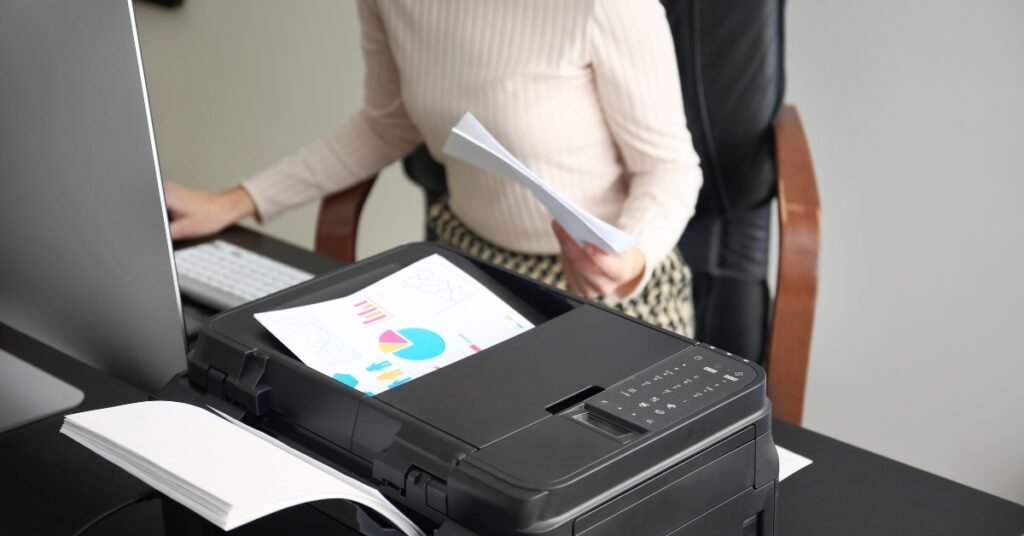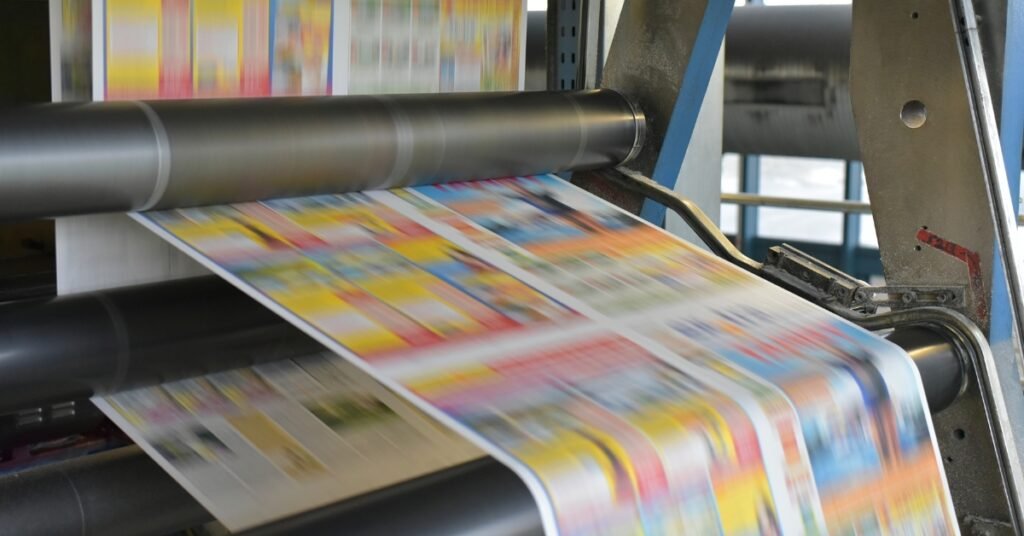Understanding the Basics of Booklet Printing

Booklet printing is a comprehensive procedure. Whether you’re whipping up a snazzy catalog for your latest product line or crafting an informative manual, booklet printing is the world of oysters for you. This blog answers all the questions by getting into the nitty-gritty of making your project a page-turning reality, from picking out the right paper to nailing the binding. Stick with us until the very end, and you will be able to print booklets that look professional and feel like a feather in your cap. What is Booklet Printing? So, what exactly is booklet printing? What is booklet printing anyway? It is, in short, the art of turning printed sheets into a small book by binding or stitching them together. These are not your typical novels; I’m talking about smaller texts such as pamphlets, leaflets, and manuals. From single pages to multiple-page collections that are still lighter fare than a full book, when your prose just doesn’t fit in a “flyer” and an entire bound work is overkill. Booklet printing is just right as an information outlet, it’s hand-held and has all the relevant info at once. Key Components of a Booklet Cover Every booklet starts with its cover – this is what beckons the reader to take a peek inside. The cover isn’t just about beauty; it’s about durability too. You’ll want to choose a material that stands up to handling but also catches the eye. Binding Moving inside, the binding keeps the pages together and can vary from the classic saddle stitch to the more polished perfect binding, depending on your page count and budget. The Paper Then there’s the paper itself. Not too flimsy, not too stiff; picking the right paper weight is crucial. It influences not only the feel of the booklet but also how well the pages turn and how vibrant your images appear. After all, first impressions count and your choice of paper can make or break those impressions. Designing Your Booklet Designing a booklet is like setting up a dinner party – you need the right arrangement to make sure everything flows smoothly. Layout Start with a clear layout. Margins should be generous enough to give your text some breathing room, while spacing and a consistent grid system keep everything from feeling cramped. Typography Typography is your secret weapon for readability. Choose fonts that not only complement your brand but are easy on the eyes. Mixing a serif with a sans-serif can create a dynamic look, just ensure there’s enough contrast. Images Now, let’s talk imagery. A picture speaks a thousand words, right? High-quality images can transform your booklet from good to great. But remember, it’s not just about slapping on high-res photos; they need to be relevant and aligned with your text to create a cohesive narrative. And before you go to print, make sure those images are crystal clear in the format you’re using because blurry pictures are a no-go. Preparing Your File for Printing Before sending your masterpiece to the printer, make sure it’s dressed to impress. Opt for software designed for print layouts like Adobe InDesign, which can handle the heavy lifting of booklet design with finesse. When saving your file, PDF is your best bet. It keeps everything locked in place: layout, fonts, and images just as you intended. Don’t skip the proofreading! A second pair of eyes can catch those sneaky typos or layout mishaps that might sneak under the radar. Once everything’s polished, doing a final check with your printer’s proof can save you a world of heartache. Better safe than sorry, right? Choosing the Right Printer Picking a printer is like finding a good tailor; the right one can make you look sharp. Local printers can offer a personal touch with the convenience of face-to-face interactions. Online printers might provide competitive pricing and a broader range of services. Quality is king, so look for printers with rave reviews and samples that dazzle. Don’t be shy—ask to see examples of their work. When it comes to costs, printers usually charge based on page count, color usage, and binding type. Understanding these factors will help you budget wisely and avoid any nasty surprises. The Printing Process Once you send your files off, the real magic happens. Your digital design becomes a stack of vibrant, crisp pages. The printer will run a first batch, checking for color accuracy and print clarity. It’s like a dress rehearsal for your booklet! If something’s amiss, it’s back to the drawing board. Adjustments are made until everything looks just right. It’s a bit like tuning an instrument—every little tweak can make a big difference to the final performance. After the Print: Finishing and Distribution After printing, it’s time for the finishing touches. Options like UV coating can give your booklet a glossy sheen and extra durability. Think of it as putting a raincoat on your booklet – it adds protection and pizzazz. Now, how to get those booklets into the right hands? If you’re running a local shop, handing them out in-store or at events can create personal connections. For wider distribution, mailing services can do the heavy lifting, sending your booklets far and wide. And let’s not forget digital copies – offering your booklet as a downloadable PDF can extend your reach globally without the extra printing cost. The Wrap Up There you have it—a complete walkthrough of booklet printing from start to finish. By now, you should feel equipped to tackle your own booklet project with confidence. Remember, each choice you make, from paper type to binding, shapes how your audience experiences your booklet. So make those decisions count. Got a booklet project in mind? Or maybe you’ve just finished one? If you are ready to print, reach out to our experts at Moore Graphics, and let’s bring your vision to life!
The Evolution of Booklet Printing: From Manuscripts to Modern Day

For centuries, booklets have been the way of conveying messages and stories to the people. At the core of this process lies a fundamental question; how did the booklet journey from its ancient manuscript handwritten form to today’s state of the art digital printing press? In our next posts, we continue to follow the evolution of the technology in booklet printing, as well as how Moore Graphics employs modern approaches to answer every booklet printing requirement you have. Ancient Scribes and Manuscripts As we knew the printing press was not invented at the beginning, the work of preparing written products was extremely demanding. They were responsible for writing by hand or copying books and documents from one manuscript onto another, on scrolls, parchment, vellum, and paper made from plant material. This astonishingly lengthy process invariably meant books were scarce, costly and therefore exclusively for the few who could afford them. Communication through the written word was extremely limited and ideas could not spread as easily as they do in the present society. Newspaper Printing Revolution – Gutenberg’s Press Still, there was another great advancement in broadcasting printed information in the 15th century with the invention of the Gutenberg movable type printing. This first moving type printer enabled parts of texts – letters, symbols, spaces, and punctuations – to be set, printed, and reused on subsequent pages. This system of movable metal alloy types transformed manuscript copying, a slow process of copywork, to a mechanical method. It enabled a single printer to print hundreds or possibly thousands of copies of a particular publication within a short span of time as compared to what scriptures were capable of doing by hand. While it was conceived in its rudimentary form several centuries before, Gutenberg made the movable type printing technology popular. The speeding up and amplification of the printed materials played a crucial role for the further spread of information during the period of expansion of the Renaissance all over Europe. Effects of the Industrial Revolution and the invention of printing presses on society Another breakthrough came with the appearance of steam powered printing presses during the Industrial Revolution in the late 1700s and early 1800s which enabled cheap, high volume printing. The printing technology advanced and printing presses were made mechanical to enable thousands of sheets to be printed in a single day. This made them more readily available to the common populace since there was now mass production of all sorts of printed materials inclusive of books and newspapers. The absence of the barriers in the dissemination of information contributed to the increased social cohesion as well as the sharing of knowledge. The history of booklet printing could be dated back to the 19th century While books, newspapers and posters were becoming more popular because of the efficient printing presses, the creation of professional looking booklets remained something of a challenge. Conventional and simple booklets produced by the early amateurs include those on basic pamphlets and folded sheets that are fastened with stitches or staples. But in the late 1800s the introduction of specialist “jobbing” platen printing presses opened new opportunities for producing jobbing booklets. These small printing units provided a shorter run, cheaper and more personalized multi-page printing options for ink, binding, and papers for the businesses and other people. The Arrival of The Modern Booklet Some developments that were realized in the early to mid twentieth century added to the advancement of booklet making. Innovative technology of offset lithography printing emerged with better quality of printing, color graphics at a low price. Binding of booklets became easier and mechanized binding machines allowed professional spines and finishing of mass produced booklets. Improvements in paper making led to improved value paper stock options that were tailored to meet the market needs. These improvements also meant that visually appealing, glossy booklets and catalogs could be printed easily and economically – be it in small quantities or large ones. This paved the way for development of the modern booklet which is in use by businesses and organizations all over the world today. Booklet Printing Using Digital Press This is the most recent step in the process of professional booklet production in the 21 st century – digital printing. Just as we previously enhanced communication through the development of computers, digital presses are changing the process of print. The company specializes in the field of graphics and digital printing and it has earned its place as an industry pioneer. These are our best digital presses, which are intended for on-demand and variable data printing as the current booklet production requires. We can print high quality color booklets and manuals in record speeds with completely customized elements like: We can print high quality color booklets and manuals in record speeds with completely customized elements like: Custom pagination – Were you given a 16 page booklet or a 100 page catalog? This means that each of the booklets needs to be personalized – targeted at specific areas or individuals. Variable web page layout – add or modify pictures, and text, on each webpage Cover – select from glossy, matte or abnormally dense cover stock Flexible sizes – It allows the use of different page sizes if one size is not sufficient for a publication. Quick turnaround – Receive your order within the shortest time possible, within a day if necessary. This means that we are capable of creating professional booklets from scratch to match your specific business requirement at your own convenient time. We pride ourselves in offering our clients the most comprehensive digital press services and professional employees that can handle any task, regardless of its size or complexity. Future of Booklet Printing Indeed, booklets have evolved from papyrus scrolls to paper printouts to downloadable PDF files. As we progress in the year ahead, technology will go on to advance more and more the print solutions present, however, the demand for high quality booklet printing remains constant. This cannot be compared with the tact
